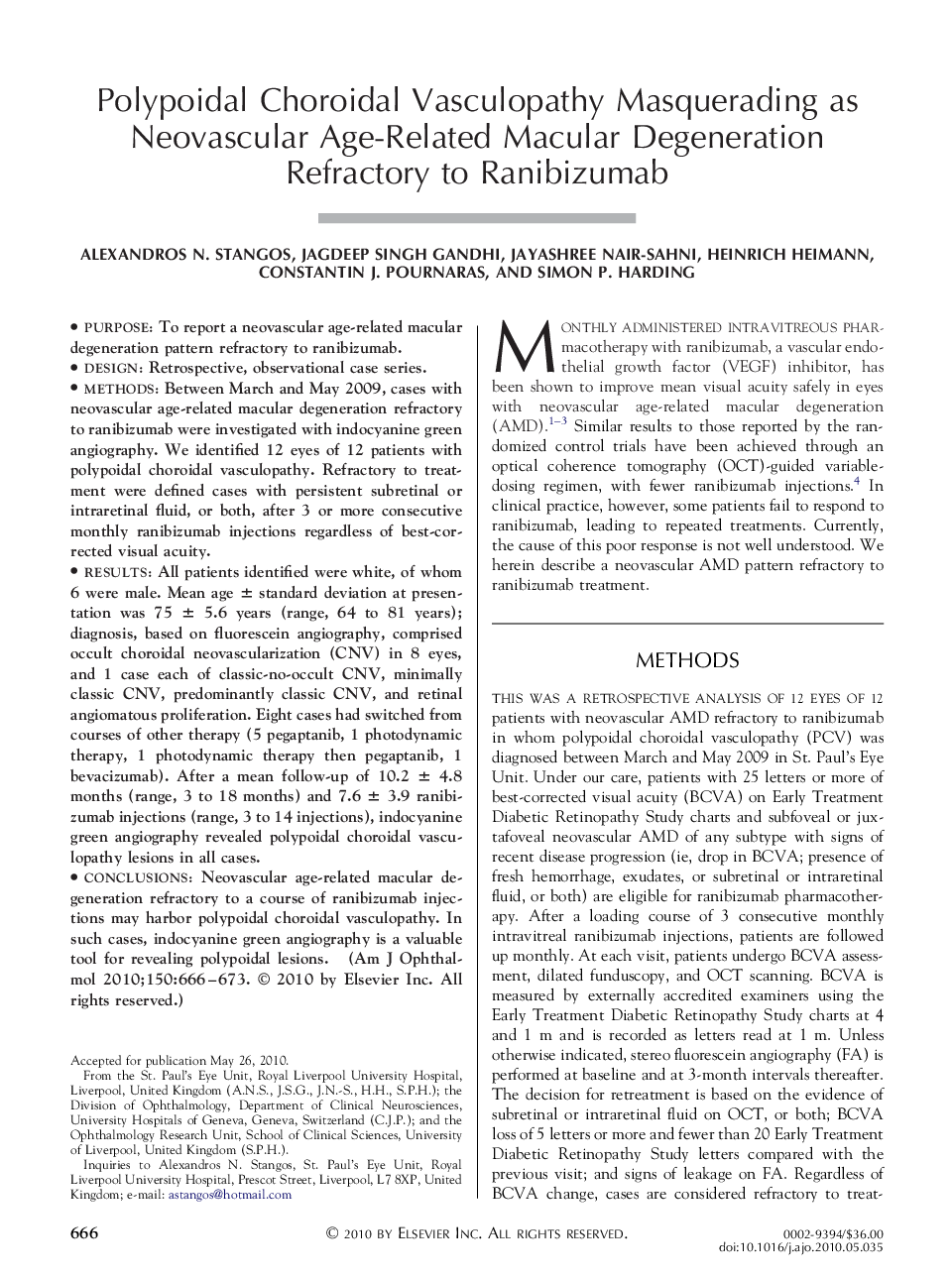| Article ID | Journal | Published Year | Pages | File Type |
|---|---|---|---|---|
| 4003634 | American Journal of Ophthalmology | 2010 | 8 Pages |
PurposeTo report a neovascular age-related macular degeneration pattern refractory to ranibizumab.DesignRetrospective, observational case series.MethodsBetween March and May 2009, cases with neovascular age-related macular degeneration refractory to ranibizumab were investigated with indocyanine green angiography. We identified 12 eyes of 12 patients with polypoidal choroidal vasculopathy. Refractory to treatment were defined cases with persistent subretinal or intraretinal fluid, or both, after 3 or more consecutive monthly ranibizumab injections regardless of best-corrected visual acuity.ResultsAll patients identified were white, of whom 6 were male. Mean age ± standard deviation at presentation was 75 ± 5.6 years (range, 64 to 81 years); diagnosis, based on fluorescein angiography, comprised occult choroidal neovascularization (CNV) in 8 eyes, and 1 case each of classic-no-occult CNV, minimally classic CNV, predominantly classic CNV, and retinal angiomatous proliferation. Eight cases had switched from courses of other therapy (5 pegaptanib, 1 photodynamic therapy, 1 photodynamic therapy then pegaptanib, 1 bevacizumab). After a mean follow-up of 10.2 ± 4.8 months (range, 3 to 18 months) and 7.6 ± 3.9 ranibizumab injections (range, 3 to 14 injections), indocyanine green angiography revealed polypoidal choroidal vasculopathy lesions in all cases.ConclusionsNeovascular age-related macular degeneration refractory to a course of ranibizumab injections may harbor polypoidal choroidal vasculopathy. In such cases, indocyanine green angiography is a valuable tool for revealing polypoidal lesions.
